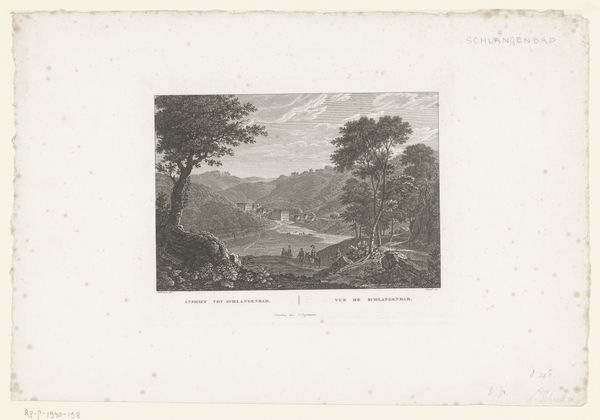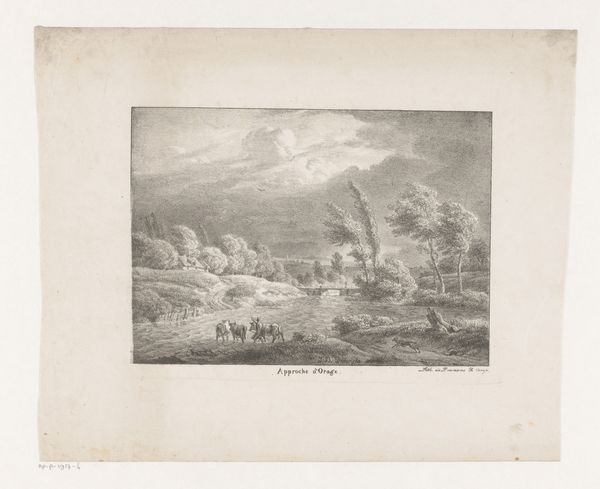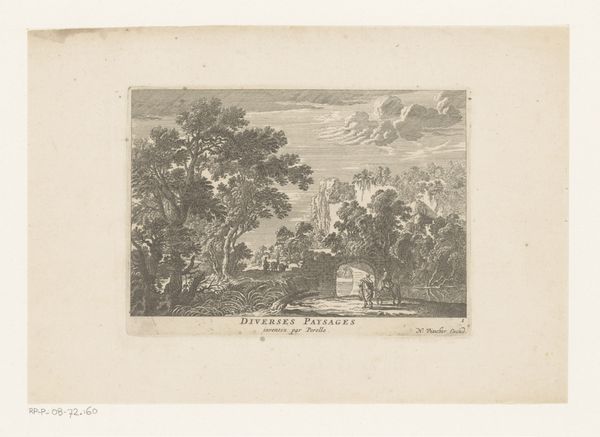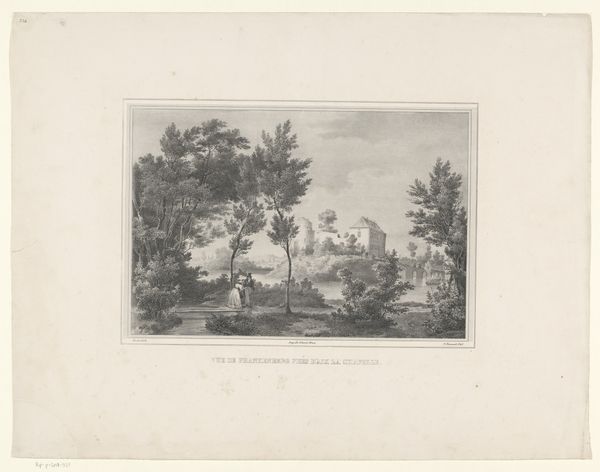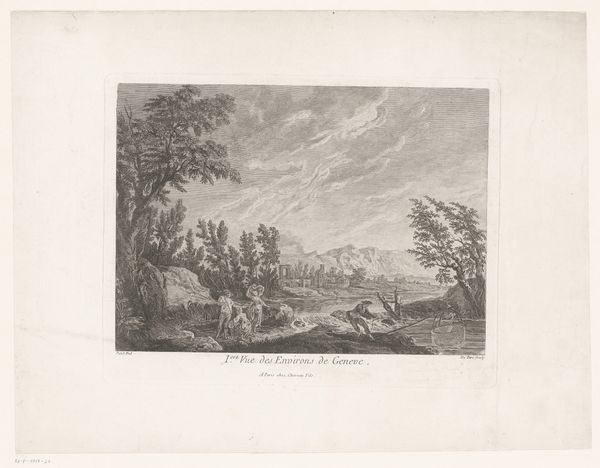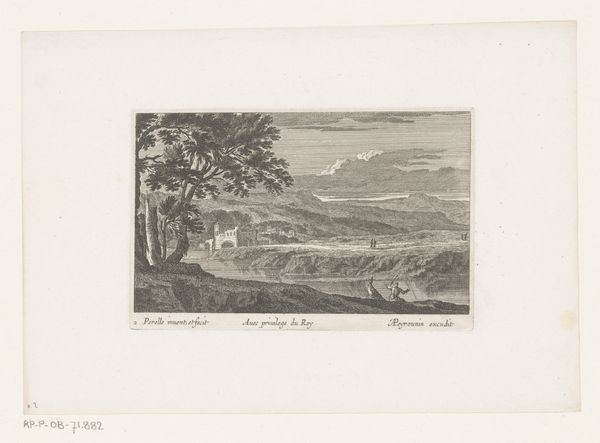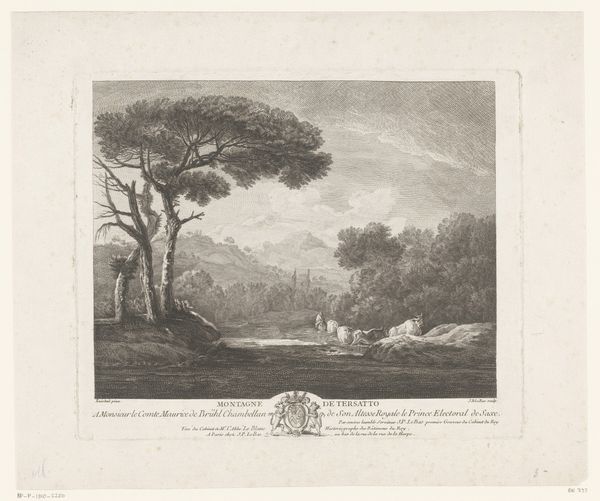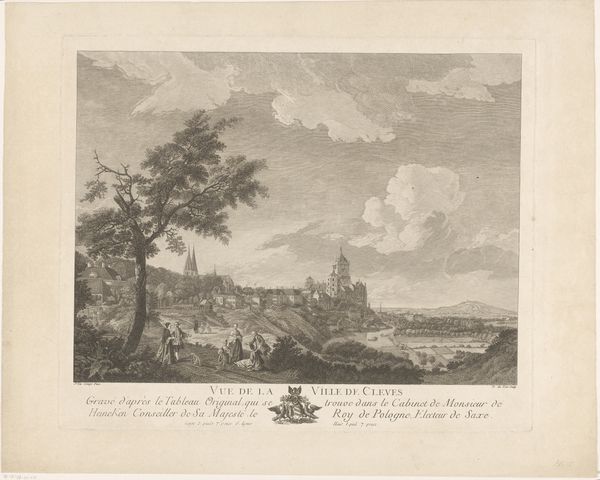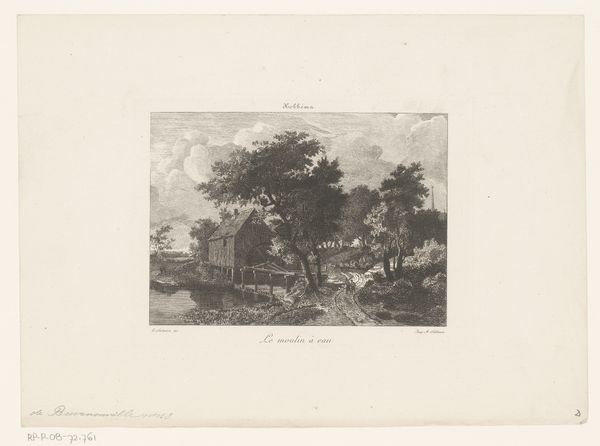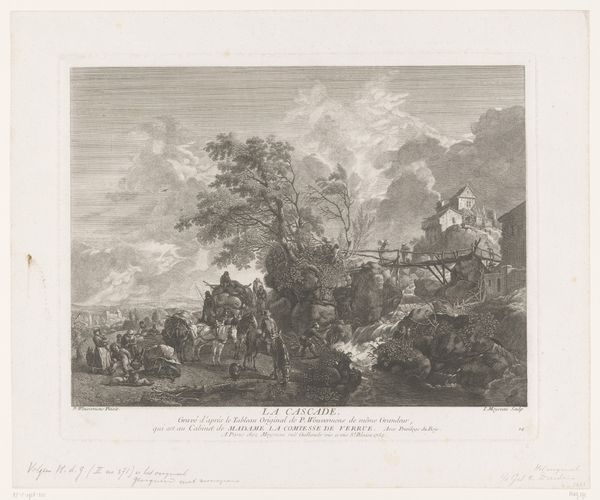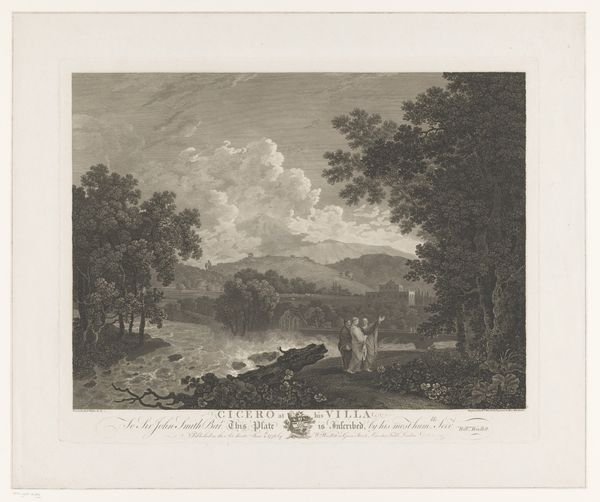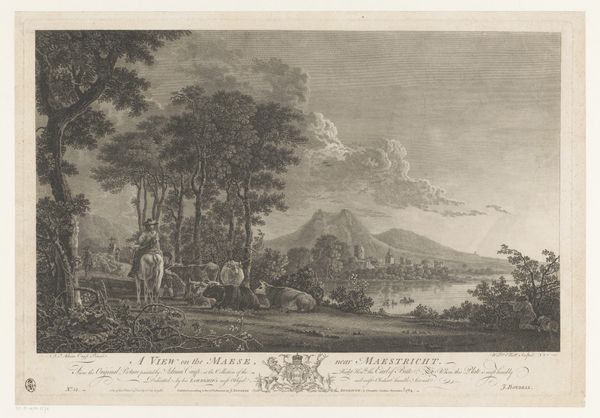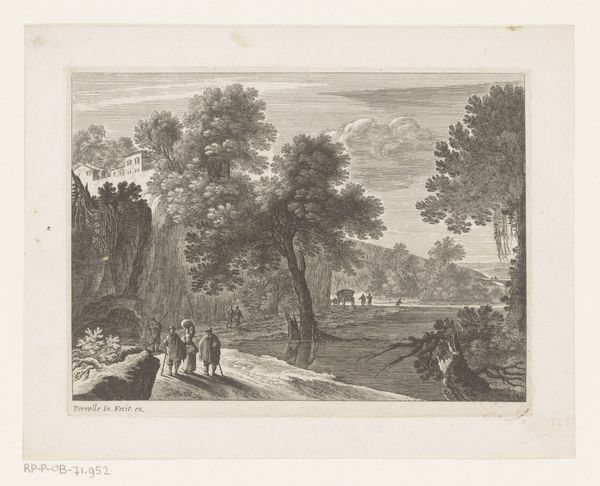
Dimensions: height 208 mm, width 261 mm
Copyright: Rijks Museum: Open Domain
Editor: So this engraving, titled "View of the Banks of the Po in Italy," is from between 1750 and 1850. It has this remarkable sense of bustling activity captured in monochromatic tones. I'm struck by how much detail is conveyed through the etching. What cultural narratives or symbolic languages do you see at play? Curator: Consider how the river Po itself functions as a symbol. Rivers, throughout history, often represent the passage of time, the journey of life, and even cultural boundaries. Look at the figures along the banks; they seem engaged in various tasks. The inclusion of these figures tells us this isn't just about landscape, but about human connection to the land. What kind of relationship do you think the artist is suggesting between people and the natural world? Editor: It almost seems like a harmonious coexistence, the people aren't dwarfed by the landscape but part of its fabric. I also notice the strategic positioning of that building in the background—perhaps suggesting the presence of nobility or established power. Curator: Precisely! The building anchors the scene with established societal structure while daily life unfolds on the banks of the Po, showing the coexistence of grand narratives and everyday experience. Editor: So the image isn’t just about a place; it’s about how a place shapes identity and societal memory, a record of human experience etched onto the landscape. Curator: And it goes further than that, the enduring importance of rivers in civilization itself. Editor: Fascinating. Thanks for shedding light on this! Curator: My pleasure. Always rewarding to decode the visual language of our cultural memory together.
Comments
No comments
Be the first to comment and join the conversation on the ultimate creative platform.
